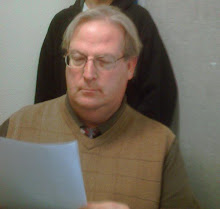PHYS 1100 LESSON 5 FOR
TUESDAY, AUGUST 10, 2010
I Introduction
II Logistics
III Return of tests, labs, papers; collection of overdue assignments
IV Running Grades
V Review of Lesson 4: Newton's Laws of Motion
A. Objects at rest, stay at rest; objects in motion stay in motion; UNLESS acted upon by an Fext.
B. F = m a à ties into the Universal Law of Gravity
C. Every force has an equal and opposite force, or, F1 = - F2.
D. Units of force are “Newtons”, kg m/s2. = N
F = ma
v = x/t
VI Lesson 5: Forces
A. The force of friction, Ff = mN = + mmg, which means the force of friction equals a number (m) that is called the “coefficient of friction” multiplied by the equal and opposite force to gravity, N, the Normal force; or N = mg, where m is the “mass” and g is the acceleration of gravity, “9.8 m/s2”. When I put in the “plus sign, +,” that means the Normal force is positive, whereas gravity is negative (down). “Normal” here means “perpendicular to the plane of the table,” or, up.
B. Hooke's Law, Energy, Work, Momentum
1. Hooke’s Law deals with springs (like in pens, in cars as shock absorbers, in toys like the Slinky...)
F = - k x, which means that the force, which is negative, pushes (or pulls) in the opposite direction to the external force. If I stretch a spring, it will recoil back to its original shape when I let go; if I compress a spring, it will push itself out to its original shape once I stop compressing it. The “k” is called the “spring constant.” A large k means a very strong spring, like in a shock absorber. A very small k means a very weak spring, like a Slinky. “x” means how far the spring is compressed in, or, stretched out.
In the Hooke's Law lab, we will use F = - k y instead, since we will be stretching a string downward in the negative y-direction. The force that we will apply will be a weight which will have the force of = m g. So, in the lab,
- k y = m g. We will measure “y” with a ruler, we will know the mass, and we know gravity.
2. Forms of Energy include, but are not restricted to:
· Heat
· Light
· Mechanical
· Acoustical, etc.
3. Kinetic energy (K.E.) is in motion = ½ mv2, the mass must have a speed or velocity. If it is not moving, NO K.E.
Potential energy (P.E.) is stored energy. For storing potential energy when working against the force of gravity, P.E. = mgh = (mass)(acceleration)(height above starting point).
An Example: take a 5-kg cat and carry him up a hill about 100 meters. You will have stored this much P.E. in the cat: mgh = (5kg)(- 9.8 m/s2)(100 m) ~ 5000 Joules.
If you then release (drop) the cat over the edge of a cliff that is 100 meters above where you started, 5000 Joules will be released and turn into K.E. as the cat is falling, until he impacts with the ground. The instant just before impact all the 5000 Joules have changed from P.E. to K.E. After impact, the energy then is transferred into heat (thermal energy), sound (acoustical energy), destruction (mechanical energy), and so forth.
4. The only good thing about energy is to use it to do work for us. However, nothing is 100% efficient, so the amount of work done divided by the available energy to do that work is a ratio: Work / Energy < 1, which means, less than 100%.
If I were to use a force, F, and push a mass, m, a distance, d, then the amount of work that I would do on that object would be the force times the distance moved, or F x d = energy, units 1.0 N-m == Joule
5. In chemistry, calories are used as the main concept of energy, and 4.186 calorie = 1 joule.
However, 1,000 calories, or, 1 kcal is what is called a “food calorie” or, a Calorie with a capital “C”. 1.0 Calorie = kcal.
The stuff below was NOT covered, but will be:
6. Momentum = energy of motion
p = m v
Dp = 0 in a closed system
VII Laboratory Exercise 5: Potential and Kinetic Energy
VIII HWK Assignment 2: 5-9 and do Problems 1, 3, 9, 13, 19, 25, 29, 31, and 39 on pp 140-143; Problems 1, 3, 9, 13, 19, 25, 29, 31, 39, 53, 63, and 65 on pp 177-184; Problems 1, 3, 9, 13, 19, 25, 29, 31, 39, and 53 on pp 210-213; and Problems 1, 3, 9, 13, 19, 25, 29, 31, 39, and 53 on pp 244-248; Problems 1, 3, 9, 13, 19, 25, 29, 31, 39, and 53 on pp 289-292.due 8/12
IX Essay 2: Sir Isaac Newton, due 8/12
Tuesday, August 10, 2010
Subscribe to:
Post Comments (Atom)

No comments:
Post a Comment